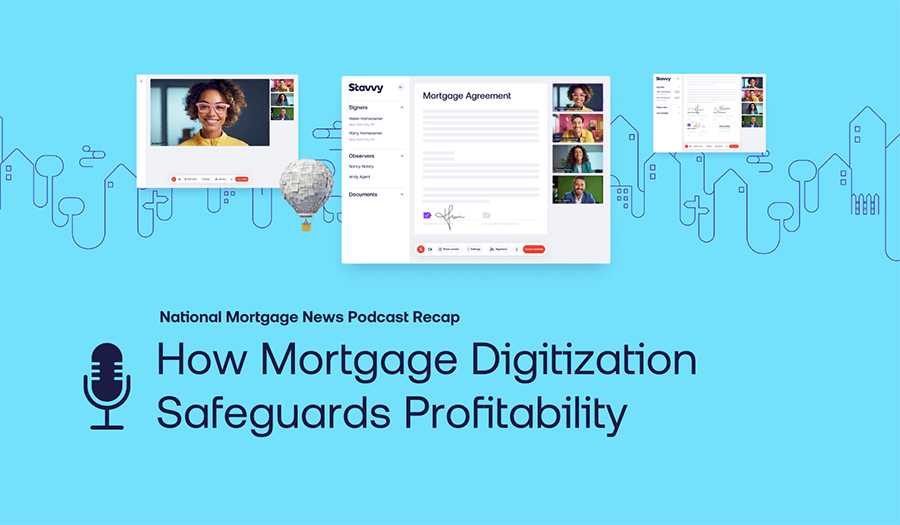In our June 2024 webinar, “Preparing Mortgage Servicing for Policy Flux”, panelists discussed the then-pending proposed rule changes to Regulation X from the Consumer Financial Protection Bureau (CFPB). They expected the changes to impact operations for mortgage servicers, from foreclosure protection timelines and customer-facing communications to changes related to the limited English proficiency space.
On July 10, 2024, the CFPB published proposed changes to Regulation X designed to evolve and improve the mortgage servicing process. After weathering the 2007-2008 global financial crisis and the COVID-19 pandemic, weaknesses in mortgage servicing became evident. The proposed changes are designed to prevent avoidable foreclosure and its associated costs while providing additional flexibility in responding to changing macroeconomic factors like the prevailing interest rate environment.
This blog provides a brief history of Regulation X, an overview of the recently proposed changes, and how technology can support the implementation of these regulatory updates to deliver benefits to all parties.
A Brief History of Regulation X
The Real Estate Settlement Procedures Act of 1974 (RESPA) was created to provide homeowners with relevant and timely disclosures about the details and costs associated with real estate settlement from lenders, mortgage brokers, or mortgage servicers of home loans. The Department of Housing and Urban Development (HUD) originally published Regulation X, which implements RESPA, in the 1970s. In 2010, the Dodd-Frank Wall Street Reform and Consumer Protection Act transitioned rule-making authority under RESPA to the CFPB.
The 2007-2008 global financial crisis and accompanying home foreclosures highlighted deficiencies in mortgage servicing, specifically the lack of standardized loss mitigation processes. These failures led to widespread foreclosures and regulatory intervention, leading to the establishment of the CFPB and the introduction of the 2013 Mortgage Servicing Final Rule. The rule required servicers to maintain proper communication with homeowners, evaluate all available loss mitigation options, and ensure timely processing of loss mitigation applications. It also introduced procedural safeguards to protect homeowners from avoidable foreclosures and established clear guidelines for mortgage servicers to follow.
The COVID-19 pandemic significantly increased mortgage delinquencies, prompting the federal government to introduce policies that made loss mitigation options more accessible. These policies, combined with high levels of home equity and low interest rates, allowed most homeowners to avoid foreclosure by allowing them to resume payments or pay off their loans.
Synopsis of Proposed Changes to Regulation X
The following proposed changes to Regulation X are intended to make it easier for homeowners to request assistance, understand their options, and receive clear communications. Comments were open until September 9, 2024 on the following proposed changes:
- Streamlined loss mitigation procedures and foreclosure procedural safeguards, allowing for more flexibility in loss mitigation reviews.
This proposed change relates to the incomplete and complete application framework for loss mitigation. It would replace most of the current requirements with a new framework based on foreclosure procedural safeguards. Currently, a servicer must collect a complete loss mitigation application before determining the options it offers to a homeowner. In addition, a homeowner’s foreclosure protections are subject to a completed loss mitigation application. Under the proposed framework, a servicer would not be required to collect a complete application before making a loss mitigation determination, thereby facilitating responses and offering more flexibility to homeowners. With this proposed rule change, once a homeowner requests loss mitigation assistance, the review cycle begins and proceeds until the homeowner’s loan is either brought current or one of two foreclosure procedural safeguards is met. During a loss mitigation review cycle, the servicer may not begin or advance the foreclosure process, and homeowners would be protected from the accrual of specific fees. - Enhanced early intervention requirements, with new provisions for providing additional information to homeowners.
This proposed change is designed to enhance early intervention requirements by mandating that mortgage servicers provide additional information in written notices, including the owner or assignee of the homeowner’s mortgage loan, details about available loss mitigation options, and a website to access a list of all loss mitigation options that may be available from that owner or assignee. - Expansion of loss mitigation determination notices and appeal rights to cover all types of loss mitigation options, not just loan modifications.
This proposed change expands the scope of loss mitigation determination notices and appeal rights to cover all types of loss mitigation options, not just loan modifications. This would include offers as well as denials. Mortgage servicers would be required to include additional information in determination notices, including homeowner-provided inputs that served as the basis for the determination and a list of other loss mitigation options that are still available to the homeowner (if any) with additional clarifying information. - Introduction of language access requirements to better serve homeowners with limited English proficiency.
This proposed change is designed to provide homeowners with limited English proficiency greater access to early intervention and loss mitigation communications in non-English languages. It would require mortgage servicers to provide Spanish-language translations of specific communications to all homeowners, and additional written u oral communications in other languages upon request. In addition, it would require that homeowners who received marketing for a loan in a language other than English receive early intervention and loss mitigation communications in that same language upon the homeowner’s request. - A focus on ensuring accurate credit reporting for homeowners undergoing loss mitigation review.
In an effort to address questions surrounding the accuracy and consistency of information about homeowners used during loss mitigation review, the CFPB is requesting comments about new approaches for improving credit reporting practices in the mortgage servicing industry.
Implementing Regulatory Changes: The Role of Technology
Regulation X was designed to protect consumers from predatory practices, increase transparency, and streamline the mortgage process. The proposed changes introduced in July 2024 seek to further these goals by providing additional safeguards to help avoid foreclosure, provide access to earlier intervention, and improve homeowner communication.
If and when these changes become a reality, mortgage servicers will need to update operational processes to stay compliant. Technology is the key to evolving successfully. By leveraging a flexible and digital-first solution, servicers can streamline the implementation of these regulatory changes to actualize benefits including:
- Proactive Compliance: Automated compliance checks and integrated real-time updates on regulatory requirements eliminate the need for costly manual updates.
- Audit Readiness: Comprehensive audit trails and real-time documentation reduce the risk of non-compliance and potential penalties.
- Error Reduction: Automated workflows and digital execution can reduce errors related to document handling and processing.
- Improved Transparency: Homeowners can gain real-time access to their loan status, documents, and decisions.
- Flexibility and Accessibility: Homeowners can engage in the process on their own terms by leveraging mobile-friendly platforms and self-service options.
- Customizable Workflows: Workflows can be tailored to meet specific regulatory requirements, ensuring compliance while optimizing operations.
- Real-Time Data Access: Real-time access to homeowner data allows servicers to make informed decisions quickly and accurately.
- Integrated Eligibility and Rules Engines: Automated decision engines ensure that all loss mitigation options are evaluated consistently and in compliance with investor and regulatory guidelines.
- Reduced Physical Infrastructure: Servicers can reduce the costs and inefficiencies associated with physical storage, paper processing, and mailing.
- Lower Legal and Compliance Costs: Automated compliance and audit trails can minimize the risk of legal challenges and penalties, reducing overall compliance costs.
By offering a full online journey for homeowners seeking loss mitigation assistance, technology can facilitate outreach, document when applications are started and completed, and offer flexibility in how information is displayed and communicated to homeowners. In addition, a digital solution that releases data from the confines of documents creates an added opportunity to transport secure information and use that information to assist homeowners and servicers throughout the loss mitigation process. A self-service, digital-first approach is critical to the successful implementation of forthcoming regulatory changes that impact the mortgage lifecycle.
How Stavvy Can Help
At Stavvy, we envision a future not only without paper, but without documents. Our dynamic digital solutions facilitate the unrestricted flow of data, enabling users to transform all phases of the transaction from application and disclosures, through closing, to loan delivery and default servicing.
Our Digital Default Servicing Solution delivers a superior user experience for homeowners and servicing staff. It empowers homeowners to take control of the mortgage assistance process and eliminates the fragmentation common in many servicing and loss mitigation systems.
Distressed homeowners can apply for mortgage assistance, check their status, provide documentation, accept workout offers, and sign and notarize documents through an intuitive self-service portal. Servicing teams can quickly process applications, determine eligibility in real time, and manage all relevant data and documents in one user-friendly location. The platform’s customizable eligibility engine supports all government, GSE, and private-label investor requirements.
The platform ensures full transparency and visibility for both homeowners and servicing staff. Real-time access to data, documents, and eligibility decisions is maintained in one place for all stakeholders. Every action, note, document, eligibility decision, and task is tracked and available in a uniform audit trail, supporting all regulatory and investor timelines and guidance.
Our solution is flexible and fully customizable, allowing servicers to adapt to regulatory updates or market conditions quickly. By transforming traditional, paper-based processes into modern, compliance-focused digital workflows, our technology empowers mortgage servicers to offer unparalleled ease and convenience to homeowners facing hardship.
Learn more about our Digital Default Servicing Solution for mortgage servicers.



![[Webinar Recap] Advancing Your Digital Default Servicing Strategy](https://blog.stavvy.com/hubfs/advancing-your-digital-default-servicing-strategy-blog-recap.png)